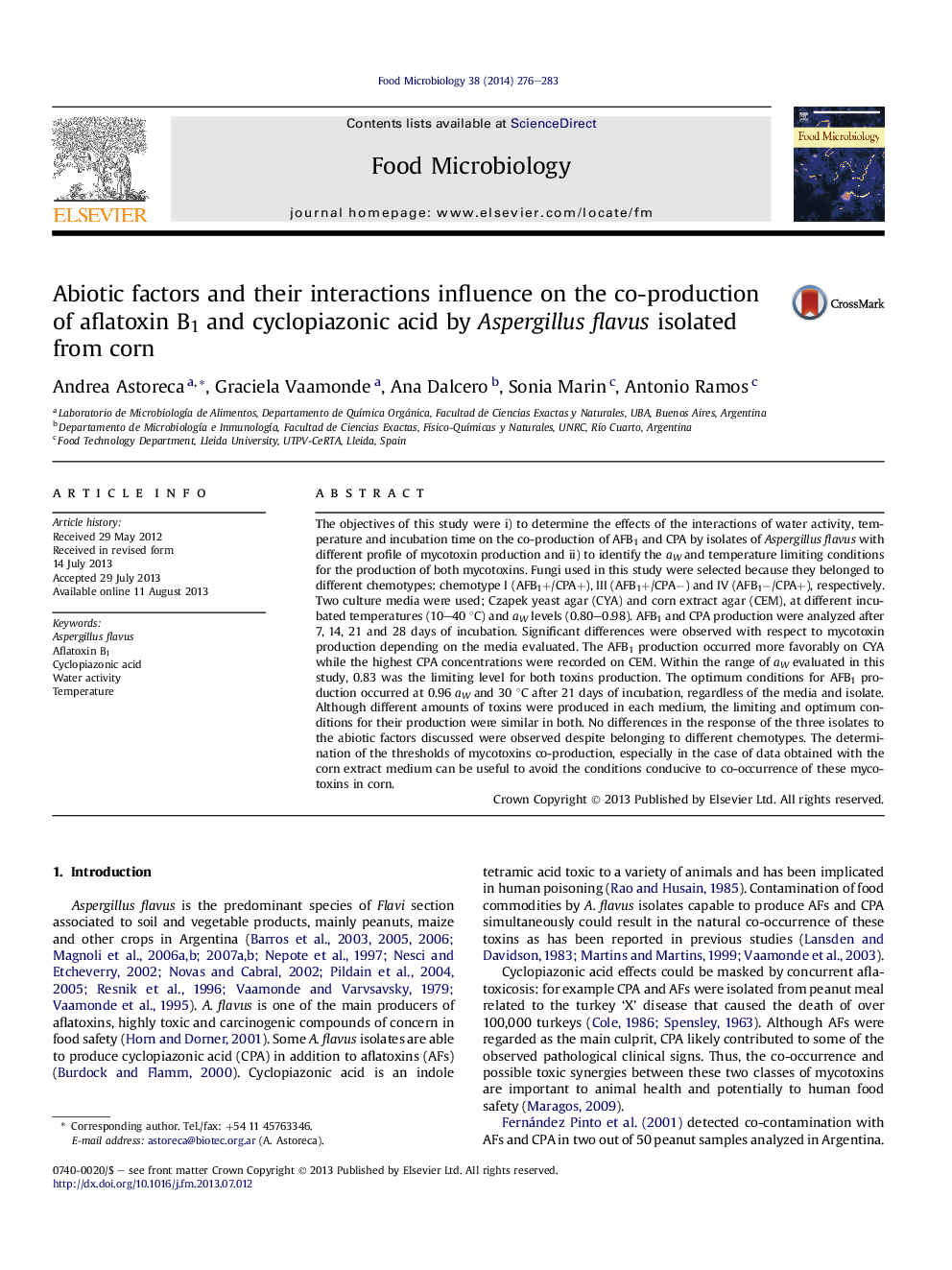| Article ID | Journal | Published Year | Pages | File Type |
|---|---|---|---|---|
| 4362944 | Food Microbiology | 2014 | 8 Pages |
•The AFB1 production occurred more favorably on CYA than on CEM for both isolates.•0.83 could be considered as the limiting value for AFB1 production.•The highest CPA concentrations were recorded on CEM for both isolates.•Conditions leading to either maximum AF or CPA levels were similar for both isolates.•No differences in the response of the abiotic factors discussed were observed despite belonging to different chemotypes.
The objectives of this study were i) to determine the effects of the interactions of water activity, temperature and incubation time on the co-production of AFB1 and CPA by isolates of Aspergillus flavus with different profile of mycotoxin production and ii) to identify the aW and temperature limiting conditions for the production of both mycotoxins. Fungi used in this study were selected because they belonged to different chemotypes: chemotype I (AFB1+/CPA+), III (AFB1+/CPA−) and IV (AFB1−/CPA+), respectively. Two culture media were used; Czapek yeast agar (CYA) and corn extract agar (CEM), at different incubated temperatures (10–40 °C) and aW levels (0.80–0.98). AFB1 and CPA production were analyzed after 7, 14, 21 and 28 days of incubation. Significant differences were observed with respect to mycotoxin production depending on the media evaluated. The AFB1 production occurred more favorably on CYA while the highest CPA concentrations were recorded on CEM. Within the range of aW evaluated in this study, 0.83 was the limiting level for both toxins production. The optimum conditions for AFB1 production occurred at 0.96 aW and 30 °C after 21 days of incubation, regardless of the media and isolate. Although different amounts of toxins were produced in each medium, the limiting and optimum conditions for their production were similar in both. No differences in the response of the three isolates to the abiotic factors discussed were observed despite belonging to different chemotypes. The determination of the thresholds of mycotoxins co-production, especially in the case of data obtained with the corn extract medium can be useful to avoid the conditions conducive to co-occurrence of these mycotoxins in corn.
